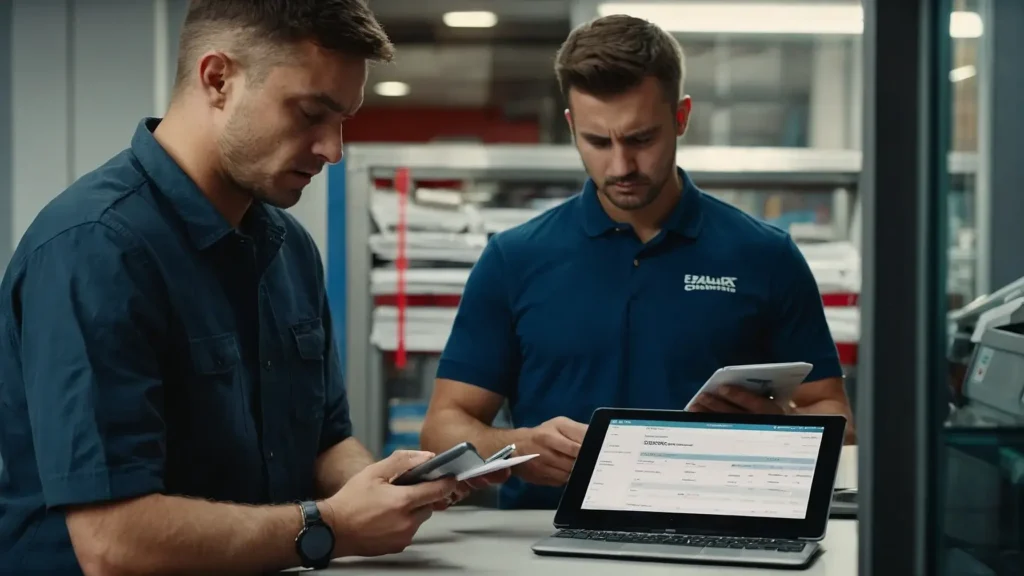Accurate and easily available transcripts of both audio and video information are more crucial than ever in today’s fast-paced, always-connected environment. This article will compare transcriptionist vs captioner, two categories of professions that provide similar services.
Even though they seem to be interchangeable, there are really some key differences between the two positions. The end result’s quality is heavily dependent on the creator’s familiarity with the distinction between the two.
What follows is an explanation of the key distinctions between captioners and transcriptionists, as well as why these details are relevant to your company.
Transcriptionist vs Captioner Detailed Analysis
The term “transcription” describes the action of turning video and audio recordings into words. This could be utilized for legal reporting, instructional transcripts, and medical transcription, among other things. In contrast, captioning is the process of turning spoken word into text for the purpose of displaying it on a screen, most often in the shape of subtitles.
Captioning
The primary function of a captioner is to provide textual descriptions that match the audio portion of a video. Then, while the movie is playing, this text is shown on the screen. Video captions are often used to assist those who are hard of hearing, deaf, or need subtitles in a language other than their native tongue.
The two most common forms of captioning are real-time and closed captioning.
Closed Captioning
As an afterthought, closed captioning (also called offline captioning) is added to finished audio or video files. Here we have a television show or a radio show as an example. The captioner’s job is to listen to the audio and write down the spoken words. The next step is to show the subtitles on the TV screen in sync with the video.
Real-Time Captioning
At a live television program or sporting event, captioners provide captions in real time. As the presenter(s) speak, the trained real-time captioner transcribes their words. The captions are shown as they happen.
Identify Which Captioning You Need
You have the responsibility of determining the kind of captioning that you need. Closed captioning is necessary, for instance, to provide audio descriptions of spoken words in a filmed event, like a movie, radio broadcast, or television show. Having real-time captioning is essential for live events like real-time meetings.

Transcription
Converting visual or auditory discourse into text is what the word “transcription” describes.
Many other types of organizations and individuals use general transcribing services, including those in the commercial, academic, artistic, and entertainment sectors. Transcribing audio into text is the most common method, and it often involves pasting the audio into an active document like Google Docs or Microsoft Word. Meeting audio that has to be turned into text for minutes is one example of generic transcription.
In a nutshell, the final goal of the text is what differentiates transcriptionists from captioners. Captioners type out text to be shown on the screen while a video continues to play in real-time, while transcriptionists type out text to be read afterward.
Why Do You Need to Know the Difference Between Transcriptionist vs Captioner
If you’re in need of transcription services, it’s crucial to know how captioners and transcriptionists vary so you can choose the best person for the job.
Employing a general transcriptionist is your best bet when requesting a transcript of a lecture or conference. When it comes to taking notes from audio or video records word for word, transcriptionists excel. This implies that even stutters, filler words, or pauses are picked up. It may be useful when an exact record is required, such as in court proceedings.
Conversely, a captioner is someone you should use if your video (maybe with sound effects) requires closed captions, also called subtitles.
If you need a caption service or a transcriptionist, knowing the distinction between the two can help you pick the proper one.

Skills Requirement Transcriptionist vs Captioner
For Transcriptionist
To excel as a transcriptionist, you need a wide range of abilities. To begin, transcribers need to be fast typists with pinpoint accuracy and exceptional listening abilities. To ensure accurate transcripts, one must pay close attention to every detail and adhere to established norms and style guidelines.
To complete their work, transcriptionists use transcription machines to listen to audio recordings. Additionally, some produce transcripts that contain every word spoken by using a stenographer machine in real-time. Transcriptionists also need a large vocabulary, excellent grammatical skills, and punctuation.
The ability to work autonomously and consistently fulfill deadlines is also essential for transcriptionists. Finally, transcribers who are interested in a job in the legal or medical profession and have a good grasp of medical or legal language will have an advantage.
For Captioner
In order to complement either live or recorded information, captions must be provided. Many broadcasts are legally obligated to provide these captions, sometimes known as closed captions. Live broadcasts and pre-recorded programs, like training films, may both benefit from closed captioning, which involves the creation of captions in real-time.
You need perfect spelling and grammar to work as a captionist. Also crucial is being able to pay attention to the audio recordings and type at a rapid and correct pace. The work might be demanding, but the payoff is worth it in the end.
Captioners require lightning reflexes, laser-like concentration, and pinpoint accuracy while typing “closed captions” in order to keep up with the person speaking. The ability to utilize certain tools for caption creation is also required.

Salary of a Transcriptionist vs Captioner
Transcribers may find work in a variety of fields and industries. An annual income of around $50,000 is typical for transcriptionists who work full-time. A medical or legal transcriptionist with experience, however, might expect a higher salary.
An experienced captioner may expect to make approximately $50,000 a year working full-time in the United States.
Also Check: Intuition vs Sensing What is the Difference
Trello vs Asana Which is the Best to Use in 2024
Final Thoughts on Transcriptionist vs Captioner
At first look, the transcriptionist vs captioner seem to be relatives; they share a similar role but were born into distinct families. Both use comparable abilities while meeting a critical demand for companies. And yet, the credentials, responsibilities, and sectors serviced vary greatly. In any case, even in this day of rapidly developing AI, transcriptionists, and captioners never have to worry about losing their employment.







